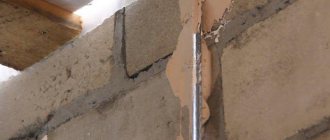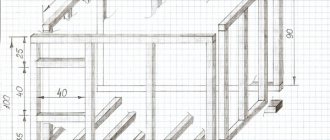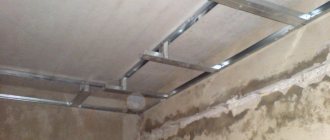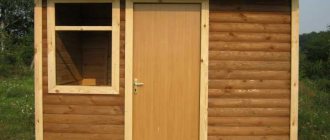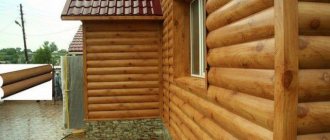The norm of indoor air humidity is determined by GOST standards, as well as by specialists in the field of home hygiene. The correct level of humidity guarantees the normal functioning of the respiratory system, optimal condition of the skin and hair.
With a lack/excess of evaporated liquid, risks of various pathologies arise. Considering all these factors, home owners must constantly monitor changes in moisture levels and bring this indicator to optimal parameters.
Humidity by season
What level of humidity should be maintained in the room depends on the season. In winter and summer, the volume of evaporation in the air is different.
The normal air humidity in summer is from 40 to 60%. Manufacturers of houses must necessarily maintain these conditions.
In winter, humidity levels decrease. They range from 30 to 60%. Often, when using measuring instruments, a humidity level of 45% is detected. At the same time, the norm of air humidity outside is 50-60%.
The decrease in the amount of moisture in winter is due to the fact that cold street air, entering the room, heats up and loses some of the evaporation.
Some experts argue that, regardless of the season, it is necessary to maintain the same humidity in the house - about 40-60%. It is important to take into account the specifics of the premises, as well as the individual characteristics of the residents (age, allergies).
How does air humidity affect a person?
Comfortable humidity conditions for humans are 40 - 60%.
Deviations from these indicators lead to poor health, and regular living in uncomfortable conditions leads to the risk of developing a number of diseases. With constant high humidity , diseases such as:
- rheumatism;
- inflammatory processes of the respiratory tract.
In dry air :
- exacerbation of allergies;
- bronchial asthma and others.
Low humidity.A person consists of liquid for the most part, and when the humidity in the air decreases, his skin begins to dry out, and the body as a whole becomes dehydrated. The mucous membranes dry out and begin to crack, which allows various viruses and bacteria to more easily penetrate the body. | High humidity.Since heat transfer increases in such conditions, there is a risk of overheating for the body. The person’s well-being deteriorates and weakness appears. Long-term exposure to this factor contributes to a decrease in immunity. People with chronic cardiovascular diseases, hypertension, and atherosclerosis especially suffer, since these diseases worsen during periods of high humidity. In places with high humidity, dampness appears and furniture deteriorates, and as a result, mold and mildew. Which also negatively affects human health. |
Humidity in the bedroom
The humidity level in the sleeping area should be low, within 45-55%. This will eliminate the likelihood of developing a wet cough, but at the same time will not allow the mucous membranes to dry out.
The air in the bedroom must not only be slightly humidified, but also constantly updated. Natural circulation is achieved through simple ventilation. It needs to be done daily.
How does air humidity affect the weather?
In summer, with high humidity, most people do not feel very comfortable. This happens due to the fact that the air becomes saturated with moisture (the higher its temperature, the more water it can “absorb”) and it becomes more difficult to breathe. In winter, at low temperatures, humidity also decreases and the air is ready to absorb it, which causes increased sweating and, along with it, heat loss from the body.
How does a person feel:
In summer , with high humidity, the air becomes saturated with moisture (the higher its temperature, the more water it can “absorb”) and it becomes more difficult to breathe. At high temperatures and low humidity, heat is much easier to bear. If the humidity rises, a person may notice an increase in body temperature, weakness, headache, increased heart rate and breathing, and heat loss from the body through evaporation (sweat).
In winter , with low temperatures, high humidity also negatively affects others. A person experiences hypothermia, which causes increased sweating and, along with it, heat loss from the body.
Humidity level in the living room
In the living room you can find a variety of equipment: game consoles, projectors, TVs. Electronic devices do not tolerate high humidity levels well, so it is necessary to bring them closer to 40-50%.
This level is also optimal for parquet, expensive furniture made from natural materials, as well as non-exotic indoor plants.
User experience in choosing hardware
In general, gritting my teeth, I forked out money for an overseas humidifier. What should we do if we haven’t developed ours in Tion yet... Here are a few words about how I chose it. Since we started digging into this topic, with the help of our engineers I got a little more familiar with the technology. Therefore, I immediately disgustedly refused ultrasound - consider it my problem, but I don’t want to breathe everything that is found in tap water, all sorts of salts and other evil spirits. All the declared softeners and super-nano rods cannot remove all this slag, but pouring in five liters of distillate a day - excuse me, look for it yourself). We don’t have a stationary reverse osmosis filter... I don’t want a “boiler” either, it will eat electricity like a horse. So I was immediately in favor of natural humidification, that is, everything that is included in “surface” (adiabatic) humidifiers or “air washers.” Well, I love everything natural, what can I do). There, just a cloth or disk constantly gets wet, but at the same time it rotates and is blown by a fan. There are, of course, disadvantages - the higher the relative humidity, the worse the process, but this correlates with our needs for moisture - the more humid it is, the less air “sucks out” water from us, like a sponge. Well, according to calculations, for one room in winter, with normal ventilation, the power needed is about 500 g/hour. Then I dug through the reviews/specifications a little and ordered it. I’ll make a reservation right away that I won’t indicate the brand, it would cost the manufacturer too much).
Conditions in the hallway and toilet
Residents enter the hallway with their shoes still on, introducing a large number of bacteria into them. A high risk of microorganism development is also observed in the toilet. To prevent the formation of pathogenic colonies, it is necessary to maintain low humidity levels.
The humidity level should not be allowed to rise above 45%. This can be achieved using a dehumidifier.
Another word for physics engineers
Main types of humidifiers:
Adiabatic
Natural evaporation occurs in them at room temperature when air comes into contact with a damp, developed surface (discs made of different materials, porous cartridges, etc.). The energy for evaporation is taken from the room air (the work process is accompanied by a slight decrease in its temperature). The humidification rate (mg/hour) depends on the fan blowing speed of the disk or cartridge, the area of the wet surface and the current relative humidity in the room, so it does not always correspond to the declared one. “Air wash” is one of the marketing names for such humidifiers. “Washing” is associated with “cleaning,” although no cleaning per se occurs during the humidification process. Cleaning is possible if the manufacturer additionally installs filters (for example, HEPA).
Steam
In these devices, the humidification process is isothermal: humidity increases through vaporization. Steam models are simpler from a hardware point of view: they are literally as simple as a kettle. The energy for evaporation is “pumped” directly into the water through the heating element, so these evaporators have maximum energy consumption. The humidification speed is mainly determined by the energy consumption of the heating element, therefore it is stable and easy to control.
Ultrasonic
In them, water comes into contact with a thin membrane, which often vibrates, and its vibrations break it into a fine aerosol. And then in the air these tiny drops evaporate naturally, without heating. The energy for evaporation is again taken from the room air, but the evaporation process itself, unlike the two previous types, occurs not in the device, but in the room. Essentially it is a “sprinkler”. The speed of humidification is mainly determined by the power of the ultrasonic “sprinkler”; it is quite stable and easy to control.
Calculation of the required humidification rate
Consider the case when the outside temperature is -5°C and the relative humidity is 80%. In a room heated to 25°C, the relative humidity will drop to 12%.
Question: “how much to weigh in grams”? That is, how many grams of water need to be added to a cubic meter of air to raise the relative humidity in the room from, say, 12% to the optimal 50%?
To reach the 50% mark at 25°C the air must have 11.5 g/m3. There is still 2.7 g/m3 left in our room air from outside. It turns out that the humidifier will need to “release” another 8.8 g/m3 into the air. To recalculate this figure into g/hour, you need to know the air exchange, i.e. how much air comes from the street.
For a room with 2 people, the minimum air exchange to remove carbon dioxide is 60 m3 per hour. Thus, the minimum humidification rate in winter should be 500 g/m3. Next we must choose a balance between comfort/health and costs. The more air we supply from the street (airing, ventilation), the better for our body. But at the same time, the load on the filters in the ventilation increases, the cost of heating the supply air, as well as the requirements for the power of the humidifier.
Moisture levels in the kitchen and bathroom
There is a high risk of excessive humidity in the kitchen and bathroom. To prevent the formation of black mold and bacteria in tile joints, it is necessary to maintain conditions within the range of 40-50% moisture content.
A little physics: absolute and relative humidity
The total amount of water in a cubic meter of air is its absolute humidity. If one cubic meter of air contains 0 grams of water, then the air is completely dry and its absolute humidity is 0 g/m3. “Pour” 5 grams of water into this cubic meter - we get an absolute humidity of 5 g/m3.
Absolute humidity cannot increase indefinitely; it has a limit. The maximum absolute humidity is called moisture capacity, that is, how much water a cubic meter of air can hold under given conditions. If the moisture capacity is 10 g/m3, then we will not “pour” more than 10 grams of water into a cubic meter of such air. All excess will “flow out” from the air in the form of condensation.
We have completely dealt with the humidity. Now about relative air humidity. It shows how many percent the air is “filled” with water.
The maximum possible absolute humidity is taken as 100%. If it is equal to 10 g/m3, and a cubic meter of air actually contains 1 gram of water, then the relative humidity is 10%. Normal air humidity in an apartment is considered to be 40-60%.

